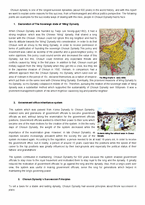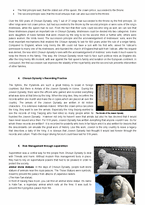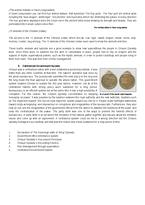조선왕조(이씨왕조)의 지속가능한 경영(영문)
2. Government office inheritance system
3. Chosun Dynasty`s Succession Principles
4. Chosun Dynasty`s Recording Practice
5. Risk Management through superstition
6. Centralized Government System
This system which was passed from Korea Dynasty to Chosun Dynastry, enabled sons and grandsons of government officials to become government officials as well, without taking the examination for the government officials positions. Government officials wanted to inherit their power to their sons which became one of the main motives for the creation of the system. In the the early days of Chosun Dynasty, the weight of the system decreased while the importance of the examination grew. However, in late Chosun Dynastry, as nepotism became increasingly prevalent within the society the use of the system increased again. According to the regulation, a person needed to be at least 18 years old, in order to receive the government office, but in reality, a person of around 15 years could take the positions while the speed of their career to the top positions was greatly influenced by their backgrounds and especially the political status of their fathers’ and grandfathers’.
The system contributed in maintaining Chosun Dynastry for 500 years because the system enabled government officials to stay close to the royal household and motivated them to stay loyal to the king and the dynasty. It greatly reduced the motivation of government officials’ to go against the king and the dynasty. Also, from a king’s point over view, the system was useful in making government officials, serve the king for generations which helped in maintaining the king’s governing power.
3. Chosun Dynasty`s Succession Principles
To set a basis for a stable and lasting dynasty, Chosun Dynasty had several principles about throne succession in place.
• The first principle said, that the oldest son of the queen, the crown prince, succeeded to the throne.
• The second principle said, that the most virtuous man can also succeed to the throne.
Over the 500 years of Chosun Dynasty, only 7 out of 27 kings had succeeded to the throne by the first principle, 20 other kings were not crown prince, but had succeeded to the throne by the second principle or were sons of the king’s mistresses, while the queen had no son. From the fact that their sons could become king as well, we can see that these Mistresses played an important role in Chosun Dynasty. Mistresses could be divided into two categories. Some were daughters of noble families that were chosen by the king to be his second, third or further wife, others were palace women, the kinds loved. The succession principle and the acknowledgement of mistresses’ sons, were the most important mechanisms that enabled the Chosun dynasty to last for 500 years under the rule of a single family. Compared to England, where king Henry the 8th could not have a son with his first wife, asked for Vatican’s permission to marry one of his mistresses, and founded the church of England that split from Vatican, after his request was denied, the less strict Chosun dynasty’s rules with the acknowledgement of mistress’ sons made it much easier to keep the throne in the family. This way, the Chosun Dynasty never had to face such political risks as England did, after the King Henry 8th incident, with war against the first queen’s family and isolation on the European continent. In conclusion, the first succession rule improves the stability of the royal family and the second rule prevents intervention of other families.
4. Chosun Dynasty`s Recording Practice
The Sphinx, the Pyramids are such a great history to boast in foreign countries. But there is Annals of the Joseon






 분야
분야


